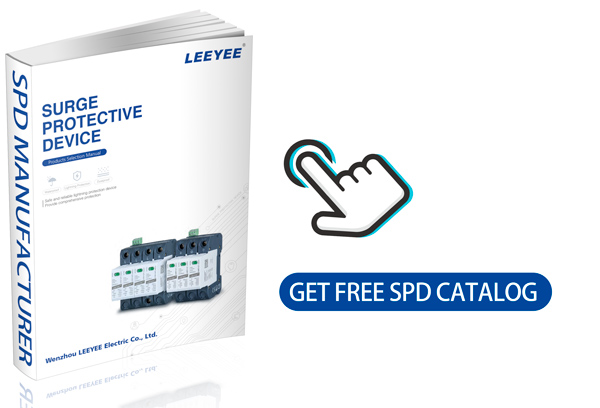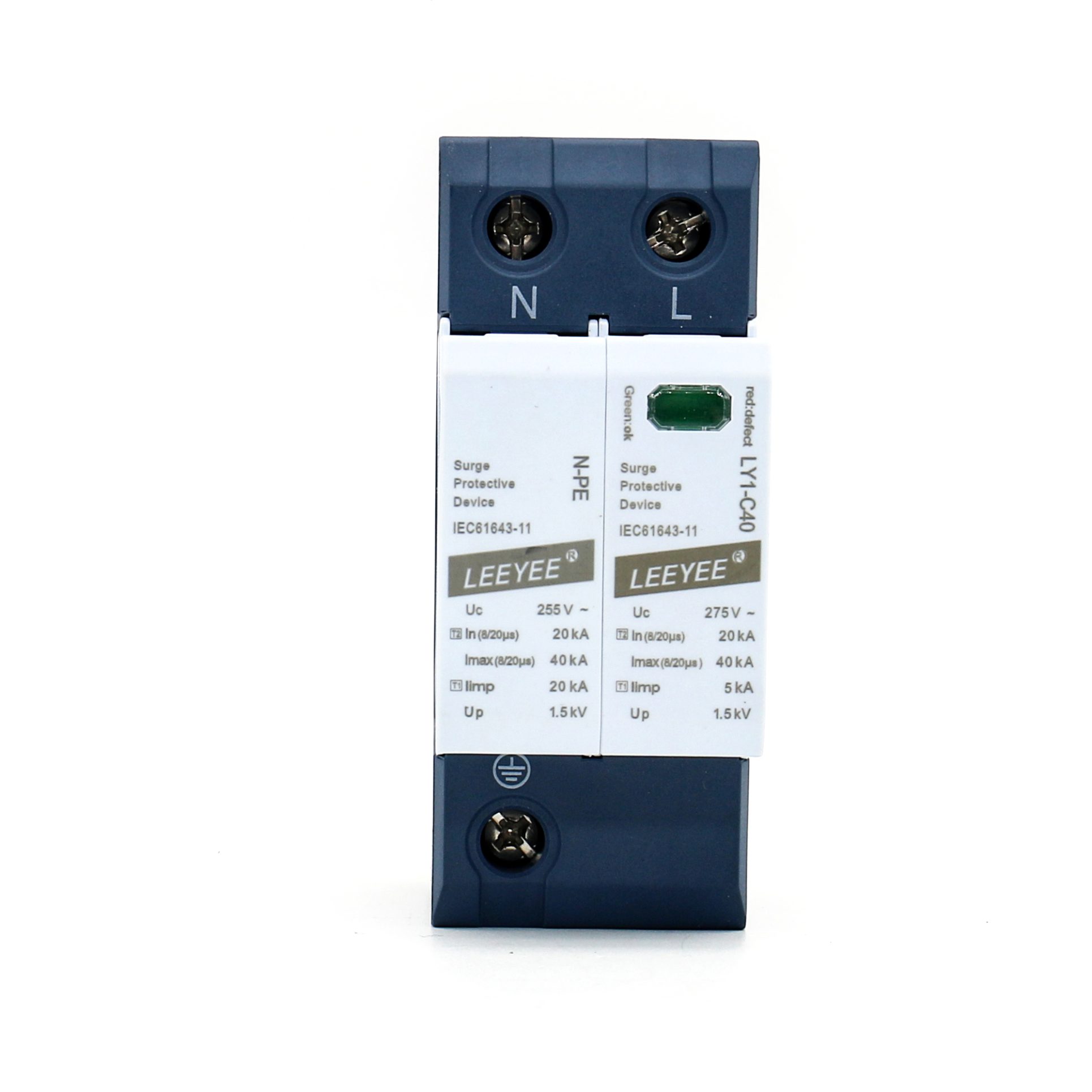One unmonitored power surge can destroy a control system or shut down a solar field. But what is the power surge meaning in technical terms? A power surge is not just a voltage blip—it can exceed insulation ratings, burn out inverters, and halt operations. The solution starts with understanding surge behavior and using protective devices.
LEEYEE, a certified SPD manufacturer, provides solutions for solar, grid, and automation systems. With up to 100kA capacity and <25ns reaction time, LEEYEE SPDs meet CE, CB, ISO9001, and TUV standards.
Explore below to fully understand power surge meaning and how to mitigate the risks.
Power Surge Meaning – Definition, Causes, and Classification
A power surge, also known as a transient overvoltage, refers to a spike in electrical voltage that lasts microseconds (μs) to milliseconds, but exceeds the standard operating voltage of a system. While most systems are designed for ±10% fluctuation, a surge can deliver several kilovolts over 1–10μs.
Key Surge Types (per IEC 61643-11 and IEEE C62.41.2):
-
Impulse Surges: Typically caused by lightning strikes (10/350μs waveform), extremely high amplitude and energy.
-
Switching Surges: Result from capacitor banks, transformers, or large motors switching on/off (8/20μs waveform).
-
Temporary Overvoltages (TOV): Prolonged increases in voltage, often from grid imbalance or neutral faults.
Power Surge Effects – How Voltage Spikes Damage Systems
When the insulation withstand voltage (BIL—basic insulation level) is exceeded, damage can occur to:
-
-
Microcontrollers, SCADA units, PLCs
-
-
Solar inverters and charge controllers
-
Communication ports (RS-485, Ethernet, CAN)
-
Breakers, relays, and control gear
Even if damage isn’t immediate, repeated surges degrade equipment lifespan and reliability, increasing O&M costs and downtime risk.
According to NEMA and IEEE, over 60% of all electrical equipment failure is linked to transient surge activity.
Power Surge Protection – How SPDs Work to Limit Damage
A Surge Protection Device (SPD) detects voltage above threshold and safely diverts the excess to ground via MOVs (Metal Oxide Varistors), GDTs (Gas Discharge Tubes), or TVS diodes. The correct SPD should meet both surge environment and system operating voltage.
LEEYEE SPD Parameters:
| Parameter | Value |
|---|---|
| Maximum Discharge Current (Imax) | Up to 100kA (8/20μs) |
| Nominal Voltage (Uc) | 275V AC / 600V-1500V DC |
| Voltage Protection Level (Up) | <1.8kV (Class II), <2.5kV (Class I) |
| Response Time | <25 nanoseconds |
| Standards | IEC 61643-11, EN 50539, GB18802 |
| Certifications | CE, CB, ISO9001, TUV |
Installing Surge Protection – Best Practices for Power Surge Zones
Power Systems (TN, TT, IT):
-
Type 1 SPD: Service entrance (lightning-prone environments)
-
Type 2 SPD: Main distribution panels (switching protection)
-
Type 3 SPD: Final circuit (sensitive devices)
Solar PV Systems:
-
1000V or 1500V DC: SPD between combiner box and inverter
-
Use of non-polarized, arc-resistant MOV-GDT hybrid modules is recommended
LEEYEE provides custom integration solutions including SPD + MCB + isolator combinations.
FAQs – Power Surge Meaning
1. What is the meaning of a power surge?
A power surge is a short-duration voltage increase above normal operating levels, potentially damaging electronics and circuits.
2. What causes power surges?
Common causes include lightning, switching transients, grid faults, and large inductive load operations.
3. How dangerous is a power surge?
It can instantly destroy electronics, reduce insulation strength, and lead to fires or blackouts.
4. How do SPDs stop surges?
SPDs clamp the voltage by diverting surge current to ground through internal components such as MOVs and GDTs.
5. What’s the difference between surge and TOV?
A surge lasts microseconds; a TOV is sustained (milliseconds to seconds). Different protections are needed.
6. How do I size an SPD?
Based on system voltage (Uc), expected surge current (In/Imax), and exposure risk (lightning density Ng).
7. Are power strips with surge labels enough?
No. Industrial systems require certified, multi-stage SPDs compliant with IEC/EN standards.
Professional Disclaimer – SPD Use for Power Surge Protection
This content is for informational and engineering reference purposes only. Always consult a licensed electrical engineer for SPD selection, surge classification, and system coordination in compliance with local codes.


